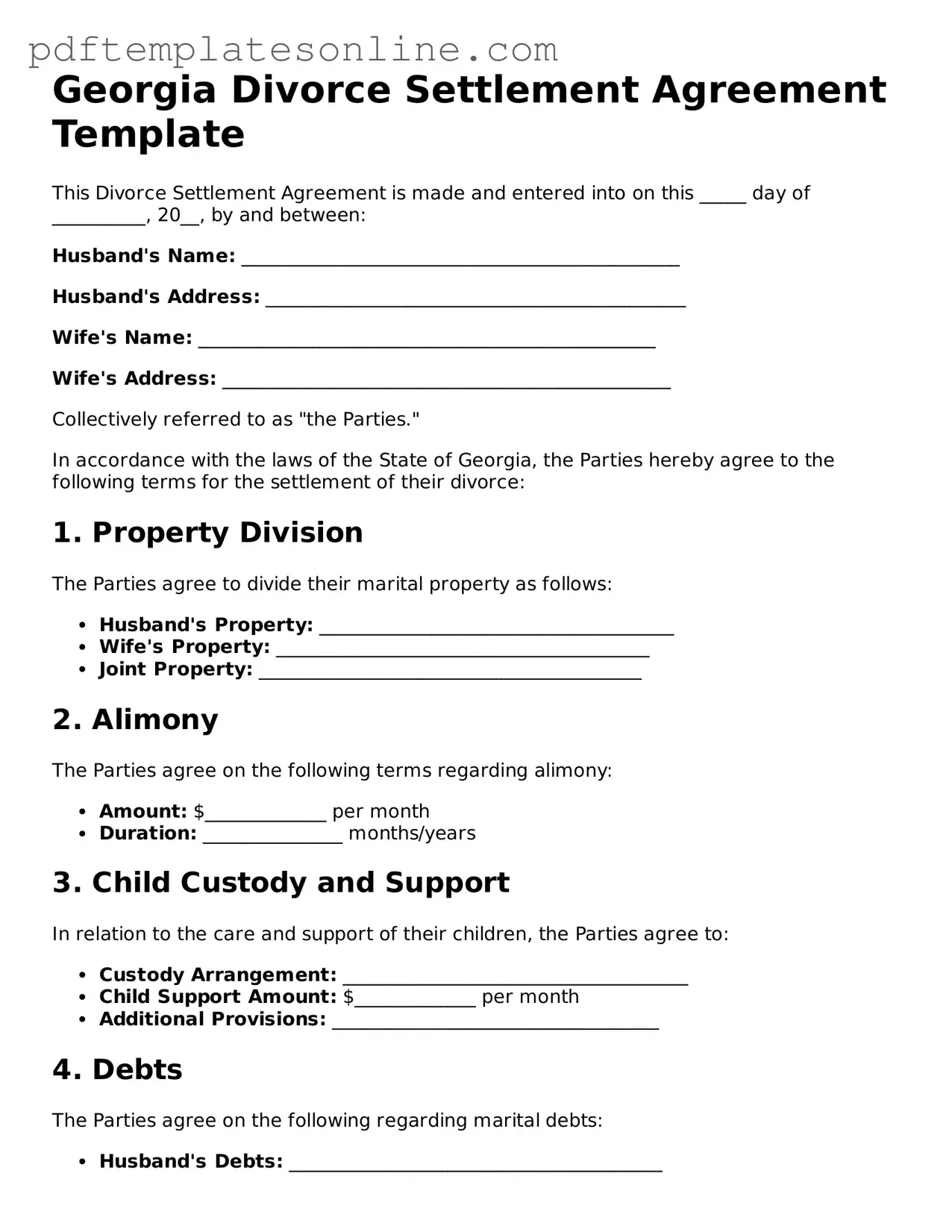Filling out the Georgia Divorce Settlement Agreement form can be a daunting task. Many individuals make common mistakes that can complicate the process. One frequent error is failing to provide complete information. When individuals leave out essential details, it can lead to delays in the finalization of the divorce. Ensure that all sections are filled out thoroughly to avoid unnecessary complications.
Another mistake occurs when parties do not fully understand the terms they are agreeing to. The language in the form may seem straightforward, but it is crucial to comprehend the implications of each clause. Misinterpretation can lead to disagreements later on. Taking the time to read and understand each section can prevent future conflicts.
Omitting necessary financial disclosures is also a common error. Both parties must provide accurate information about their income, assets, and debts. Failing to disclose all financial details can result in legal repercussions and may affect the fairness of the settlement. Transparency is key in these agreements.
Inaccurate calculations can create further issues. When determining child support or alimony, it is vital to use the correct formulas and figures. Mistakes in math can lead to disputes and may require revisions to the agreement. Double-checking calculations before submission can save time and stress.
Another mistake is not considering the long-term implications of the agreement. Individuals often focus on immediate needs without thinking about future consequences. It is important to consider how decisions made today will affect both parties in the years to come. Consulting with a financial advisor or attorney can provide valuable insights.
Inconsistent information across documents can create confusion. When filling out the Divorce Settlement Agreement form, ensure that the information matches other legal documents, such as the divorce petition. Discrepancies can raise red flags and lead to complications in the approval process.
Additionally, neglecting to review the agreement before signing is a significant oversight. Rushing through the process can result in missed errors or misunderstandings. Taking the time to carefully review the document ensures that all parties are in agreement and that the terms are accurately reflected.
Some individuals may also forget to include all necessary signatures. Each party must sign the agreement for it to be valid. Missing signatures can delay the divorce process and create additional hurdles. It is essential to ensure that all required parties have signed before submission.
Finally, failing to seek professional guidance can lead to mistakes. While it is possible to fill out the form independently, the complexities of divorce law can be overwhelming. Consulting with a legal professional can help individuals navigate the process more effectively, ensuring that all aspects of the agreement are properly addressed.
